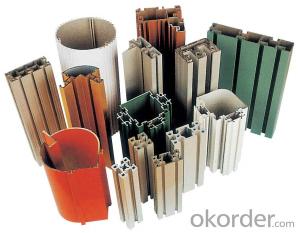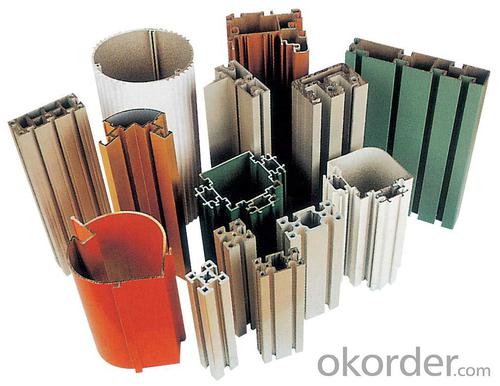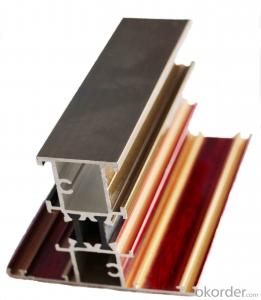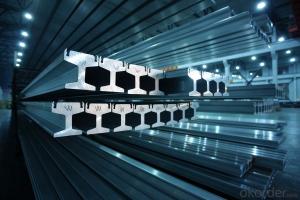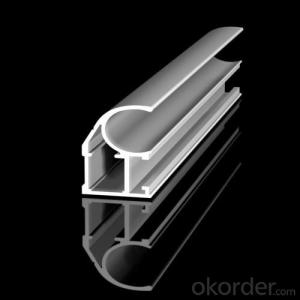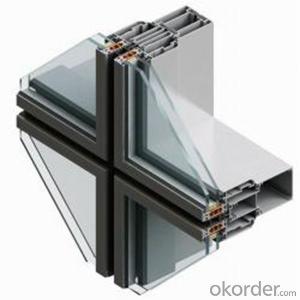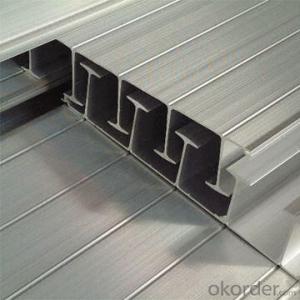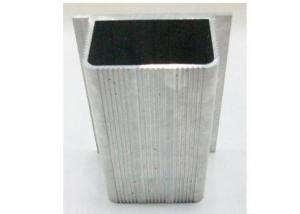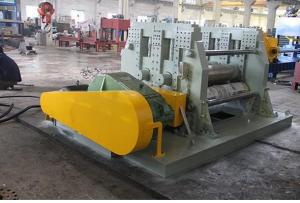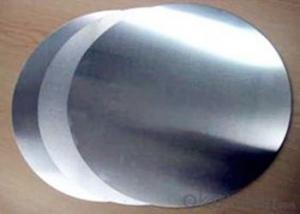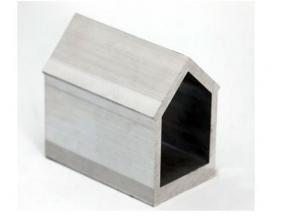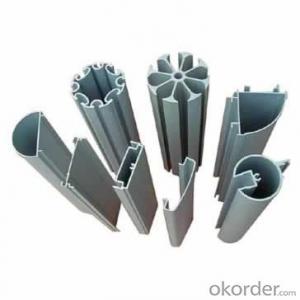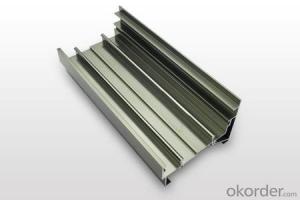Competitive Price Anodizing Aluminum Extrusion Triangle Profiles
- Loading Port:
- China Main Port
- Payment Terms:
- TT OR LC
- Min Order Qty:
- -
- Supply Capability:
- -
OKorder Service Pledge
OKorder Financial Service
You Might Also Like
Aluminium profile
1) Alloy: AA6061, AA6063
2) Temper: T5, T6
3) Series of surface treament:
1. Mill Finished
2. Anodizing: Silver, champagne, light bronze, dark bronze, black, light titanium, dark titanium.
3. Electrophoretic Coating: Silver, champagne, bronze, black, light bronze, dark bronze.
4. Electrostatic Color Powder Coating: Normal color, special color.
5. Fluorocarbon Powder Spraying: Normal color, special color.
6. Wood Grain Coating: Import paper, domestic paper.
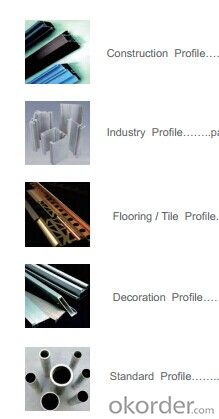
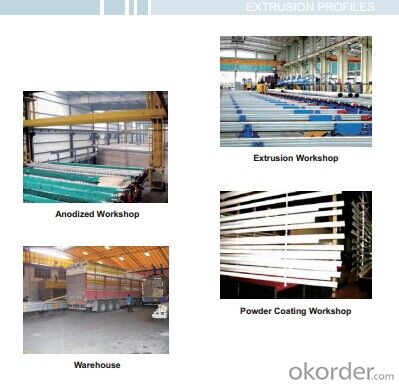
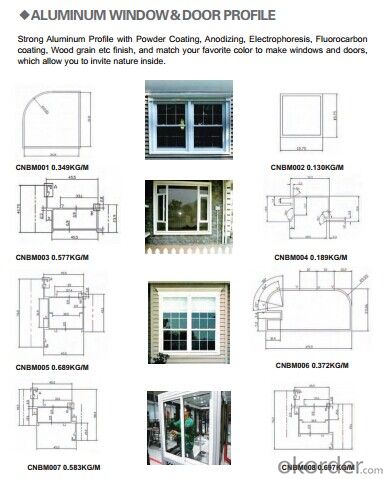
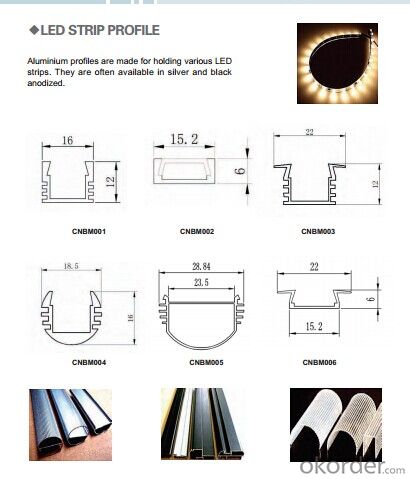
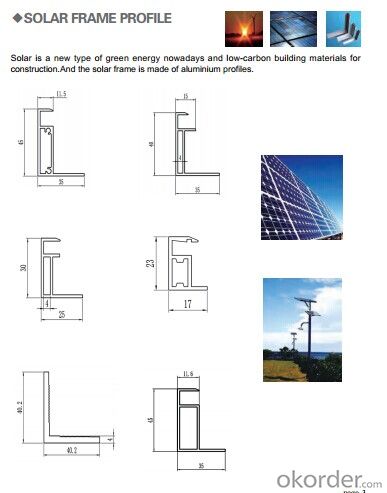
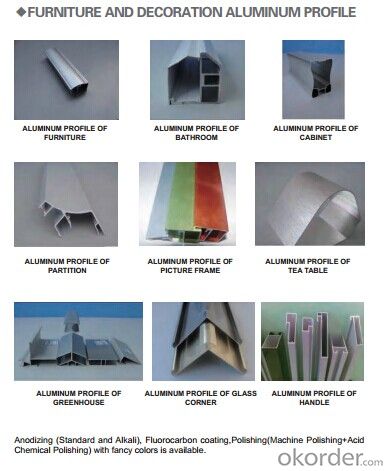
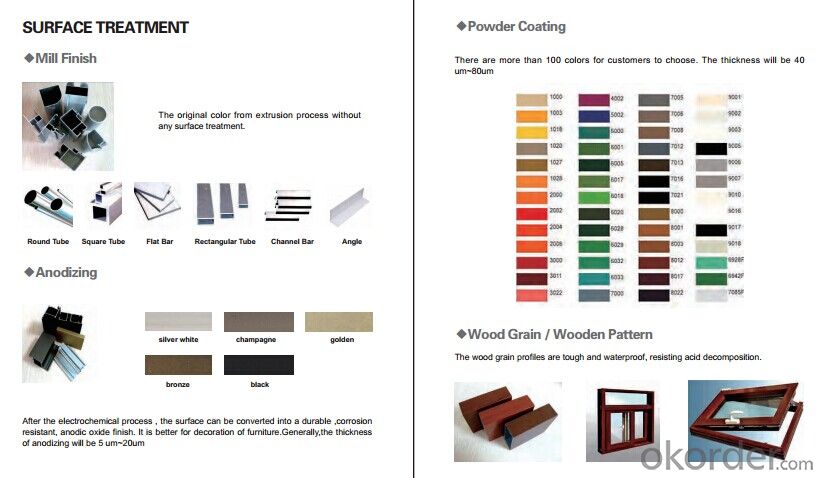
- Q: Are there any regulations or standards that aluminum profiles must meet?
- Yes, there are several regulations and standards that aluminum profiles must meet in order to ensure their quality and safety. These regulations and standards vary depending on the specific application and industry, but some common ones include: 1. ISO Standards: The International Organization for Standardization (ISO) has developed various standards for aluminum profiles, such as ISO 9001 for quality management systems, ISO 14001 for environmental management systems, and ISO 9001 for occupational health and safety management systems. 2. ASTM International Standards: ASTM International provides standards for aluminum profiles used in construction, transportation, and other industries. These standards outline the chemical composition, mechanical properties, and dimensional tolerances that aluminum profiles must meet. 3. American National Standards Institute (ANSI) Standards: ANSI develops standards for aluminum profiles used in various applications. These standards cover aspects such as design, performance, and safety requirements. 4. European Standards (EN): In Europe, aluminum profiles must meet the requirements of the European Committee for Standardization (CEN). These standards define the characteristics, dimensions, and tolerances of aluminum profiles used in construction, aerospace, automotive, and other industries. 5. National Regulations: Many countries have their own regulations governing the use of aluminum profiles. These regulations may cover aspects such as fire safety, structural integrity, and environmental impact. It is important for manufacturers, suppliers, and users of aluminum profiles to adhere to these regulations and standards to ensure the quality, reliability, and safety of their products and applications. Compliance with these standards helps to maintain consistency, interoperability, and customer confidence in the use of aluminum profiles across various industries.
- Q: This question asks about the impact of aluminum profiles on a building's ability to withstand fire.
- <p>Aluminum profiles can affect the fire resistance of a building in several ways. While aluminum itself has a high melting point and doesn't burn, it does conduct heat, which can lead to rapid temperature increases in the structure. To mitigate this, aluminum profiles used in construction are often coated with fire-resistant materials or combined with non-combustible materials. Additionally, the design of the building and the use of fire barriers can help to slow the spread of fire and heat. It's crucial to follow building codes and standards that specify the appropriate use of aluminum in fire-resistant construction to ensure the safety and integrity of the structure during a fire.</p>
- Q: Are aluminum profiles suitable for structural applications?
- Yes, aluminum profiles are suitable for structural applications. Aluminum is a lightweight and highly versatile material that offers excellent strength-to-weight ratio, corrosion resistance, and durability. These properties make it ideal for various structural applications such as architectural frameworks, bridges, aerospace structures, automotive frames, and industrial equipment. Additionally, aluminum profiles can be easily fabricated, welded, and joined, allowing for efficient construction and customization. With proper design and engineering considerations, aluminum profiles can provide the necessary strength and stability required for structural applications.
- Q: This question asks about the strength and suitability of aluminum profiles for outdoor applications.
- <p>Yes, aluminum profiles are strong enough for exterior use. They are lightweight, durable, and resistant to corrosion, making them ideal for outdoor applications. Aluminum profiles can withstand various weather conditions and maintain their strength over time. They are also low-maintenance, as they do not rust or rot, and can be easily cleaned. Additionally, aluminum profiles can be anodized or powder-coated for enhanced durability and resistance to UV rays, further ensuring their suitability for exterior use.</p>
- Q: How are aluminum profiles joined together?
- Aluminum profiles can be joined together using various methods depending on the desired strength, functionality, and aesthetic appeal. The most common methods include mechanical fastening, welding, and adhesive bonding. Mechanical fastening is a popular choice as it offers ease of assembly and disassembly. Screws, bolts, nuts, rivets, and self-tapping screws are commonly used to connect aluminum profiles. These fasteners provide a stable and secure joint, allowing for easy adjustment or dismantling if required. Welding is another effective method to join aluminum profiles. Welding processes like TIG (Tungsten Inert Gas) or MIG (Metal Inert Gas) can be used to melt and fuse the aluminum profiles together. This creates a strong and permanent joint. Welding is commonly used in structural applications where high strength and rigidity are needed. Adhesive bonding is a more aesthetically pleasing method of joining aluminum profiles. Industrial-grade adhesives specifically formulated for aluminum bonding are used to create a strong bond between the profiles. This method offers a seamless appearance, as no visible fasteners or weld marks are present. Adhesive bonding is commonly used in architectural applications where a clean and sleek finish is desired. In some cases, a combination of these methods is used to achieve the desired joint. For example, adhesive bonding can be used to secure the profiles together while mechanical fasteners provide additional strength and stability. Ultimately, the choice of joining method depends on factors such as the application, required strength, accessibility, and desired appearance. Manufacturers and fabricators consider these factors to determine the most suitable method for joining aluminum profiles.
- Q: How do aluminum profiles resist corrosion?
- Aluminum profiles have a natural resistance to corrosion due to the formation of a protective oxide layer on their surface. When exposed to oxygen in the air, aluminum reacts and forms a thin layer of aluminum oxide. This oxide layer acts as a barrier, preventing further oxidation and corrosion of the metal underneath. The oxide layer is tightly bonded to the aluminum surface, making it extremely durable and resistant to environmental elements such as moisture, chemicals, and UV radiation. Additionally, aluminum profiles can be further enhanced with various surface treatments such as anodizing or powder coating, which provide an additional layer of protection against corrosion. These treatments not only enhance the aesthetic appeal of the profiles but also improve their resistance to corrosion, making them suitable for a wide range of applications in various industries. Overall, the natural oxide layer and the ability to apply additional protective coatings make aluminum profiles highly resistant to corrosion, ensuring their longevity and durability in different environments.
- Q: This question asks about the impact of aluminum profiles on the sound insulation properties of a building.
- <p>Aluminum profiles can significantly affect the sound insulation of a building. They are often used in construction for their strength and lightweight properties. However, aluminum is a good conductor of sound, which can lead to sound transmission through the building structure. To enhance sound insulation, aluminum profiles are often combined with soundproofing materials such as acoustic foam or rubber seals. These materials help to absorb or block sound waves, reducing noise transmission. Additionally, the design and installation of aluminum profiles can also impact sound insulation; proper sealing and insulation techniques are crucial to minimize sound leakage.</p>
- Q: Can aluminum profiles be custom-designed or customized?
- Aluminum profiles have the ability to be tailored or personalized to meet specific demands. Aluminum is a remarkably adaptable material that can be easily molded and shaped into a variety of forms. By customizing aluminum profiles, it becomes possible to create distinct shapes, sizes, and finishes that fulfill the precise requirements of various applications. The customization and custom design of aluminum profiles encompass a range of possibilities. This can involve modifying dimensions, crafting intricate shapes, adding slots or holes for assembly, incorporating specific features or accessories, and even applying diverse surface treatments or coatings. Such design flexibility permits the utilization of aluminum profiles in numerous industries and applications, including construction, automotive, aerospace, electronics, and many more. The process of customizing aluminum profiles typically involves a collaborative effort between the manufacturer and the customer. The manufacturer works closely with the customer to comprehend their requirements, provide technical support, and propose design solutions that align with their specific needs. This collaboration may entail creating prototypes, conducting tests, and making adjustments until the desired custom design is achieved. In conclusion, aluminum profiles can indeed be custom-designed or customized to cater to specific requirements, rendering them a favored choice for numerous industries seeking distinctive and tailored solutions.
- Q: Are aluminum profiles suitable for exhibition displays?
- Yes, aluminum profiles are highly suitable for exhibition displays. They are lightweight, durable, and can be easily customized to fit various display requirements. Aluminum profiles also offer a sleek and modern aesthetic, making them ideal for creating visually appealing exhibition displays. Additionally, they are versatile and can be easily assembled and disassembled, allowing for easy transportation and setup at different exhibition venues.
- Q: Our company purchased aluminum 4-6 meters, many models, what is a good way to make the store that is beautiful and neat, but also conducive to the show?
- 3, if there is no crane equipment will be the same order or the same type of stamp pad (using layered pad requirements with a wooden or aluminum tube, relatively flat if it is not time to add blank felt or soft material), the section toward the aisle, easy to find,4, make up the position, stamp height is not more than two meters, otherwise inconvenient to use, but also easy to collapse.
Send your message to us
Competitive Price Anodizing Aluminum Extrusion Triangle Profiles
- Loading Port:
- China Main Port
- Payment Terms:
- TT OR LC
- Min Order Qty:
- -
- Supply Capability:
- -
OKorder Service Pledge
OKorder Financial Service
Similar products
Hot products
Hot Searches
Related keywords
